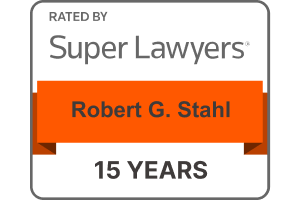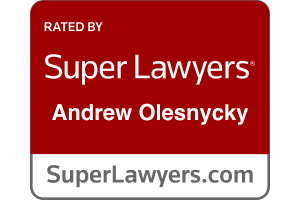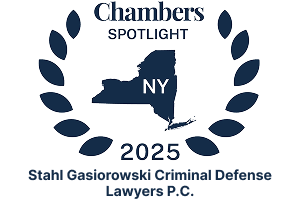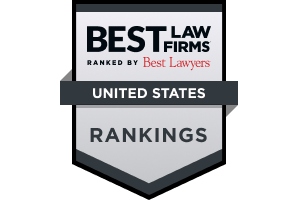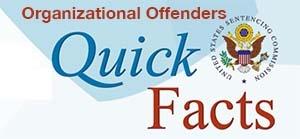United States Sentencing Guidelines for Organizations
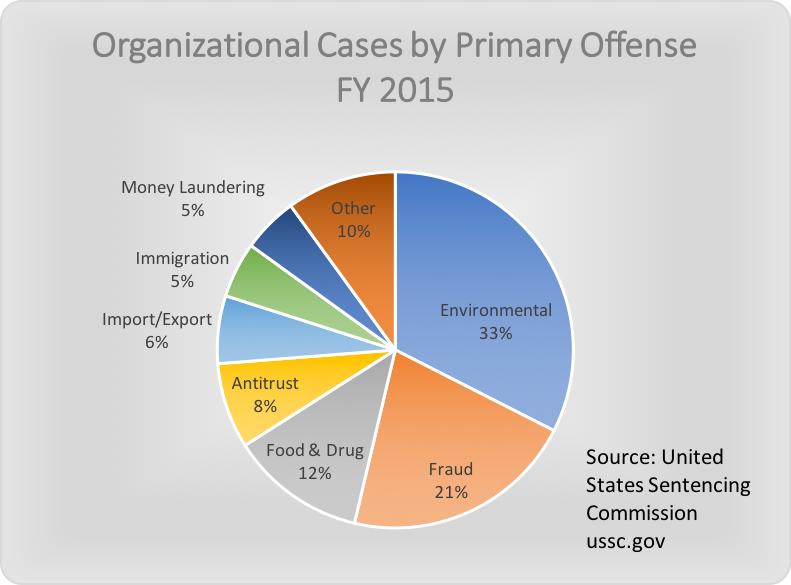
The United States Sentencing Guidelines provides federal judges with a set of guidelines to calculate an appropriate and “reasonable” sentence in criminal cases. These guidelines are intended to encourage fair and consistent sentencing proportionate to the magnitude of the crime committed. In most cases, sentencing guidelines suggest a range of months to years of prison time, in addition to a period of supervised release. Other sentences may call for a period opf probation, or a number of hours of community service. However, when the defendant in a criminal action is a corporation or similar organization, the recommended sentences must change. It’s impossible to put a corporation in jail (though individual employees or members may be co-defendants and may face prison time for their own charges).
When the defendant in a criminal matter is an organization, the court’s first recourse for sentencing generally takes the form of various fines and penalties. A distinct order of priorities exist for the purpose of determining appropriate fines for an organization found guilty of criminal behavior. The first and foremost concern for the court is remedying, whenever possible, the harm caused by the organization through its criminal acts. If there are identifiable victims, the court may order that restitution be paid directly to the persons harmed to make them whole or otherwise remedy their loss. The organization may also be obliged to notify potential victims who have not been expressly identified. Additional fines or community service may also be required if the crime resulted in persistent conditions that continue to harm others (such as the illegal dumping of toxic pollutants in areas where people or animals may be sickened by them). Sentencing guidelines generally recommend that any monies paid by an organization first go toward fully compensating its victims, before any other type of fine is paid.
If the primary purpose or mode of operation of the accused organization is found to be criminal in nature, courts are often authorized by to impose fines significant enough to deter not only that corporation but others who may be engaged in similar activities. In many cases, though, the organization being charged with criminal behavior is not so thoroughly corrupt that it lacks any legitimate and legal purpose or means of operating. Punitive fines for these organizations are generally determined by considering a series of factors regarding how serious the crimes committed by the organization were and how culpable the organization as an entity is considered to be. The severity of an organization’s crimes is strongly influenced by the amount of financial gain (in terms of either increased profits or cost savings) resulting from the criminal acts, or the amount of financial loss the organization’s criminal activity caused others – deliberately, knowingly, or recklessly.
Culpability is a difficult matter to quantify when dealing with an organization made up of numerous individuals, particularly if that organization has segments or departments that operate semi-independently of one another. As such, the sentencing guidelines include a weighted system for measuring degrees of culpability. The larger an organization (or branch within the organization) in which high-level executives or managers participated in, supported, or willfully ignored the criminal actions in question, the more culpable the organization is, as the criminal activity is manifestly more widespread and pervasive. Similarly, the organization is considered more culpable if it has a history of similar illegal activity or violated an existing court order. Attempting to cover up the offense or obstructing a government investigation also compounds the organization’s culpability.
There are actions that an organization can take to reduce its culpability, as well. If the organization had an effective regulatory compliance and ethics program in place, it will be considered less culpable than an organization without such a program. An ethics and compliance program is considered effective if it reasonably could have discovered the violation before outside parties exposed it – even if the program did not actually discover the criminal behavior first. Similarly, if the organization reports the violations to the proper governmental authorities as soon as it becomes aware of them, cooperates with any government investigations, and clearly and explicitly accepts responsibility for the harm caused by those violations, the court will consider the organization less culpable than one that attempts a cover-up.
In addition to any fines levied by the courts according to these sentencing guidelines, a judge may add probation to the sentence of an organization convicted of criminal activity if she determines that the organization requires increased scrutiny because of the risk of offending again, or to ensure that appropriate measures are implemented within the organization to reduce that risk (like the establishment of a compliance and ethics department). If another, similar offense is committed during the probationary period, the penalties recommended under the sentencing guidelines will be substantially more severe due to violating probation. The judge may also impose a monitorship by an outside attorney or expert in the field to establish additional safeguards and protocols to uncover and discourage bad conduct.
Stahl Gasiorowski Criminal Defense Lawyers aggressively defend organizations and individuals charged with complex federal and state crimes. Founder Robert G. Stahl is recognized as one of the top criminal defense attorneys in the NY/NJ area for his skills, knowledge and success. To contact us to discuss your case, call 908.301.9001 for our NJ office and 212.755.3300 for our NYC office, or email us at rstahl@stahlesq.com.






